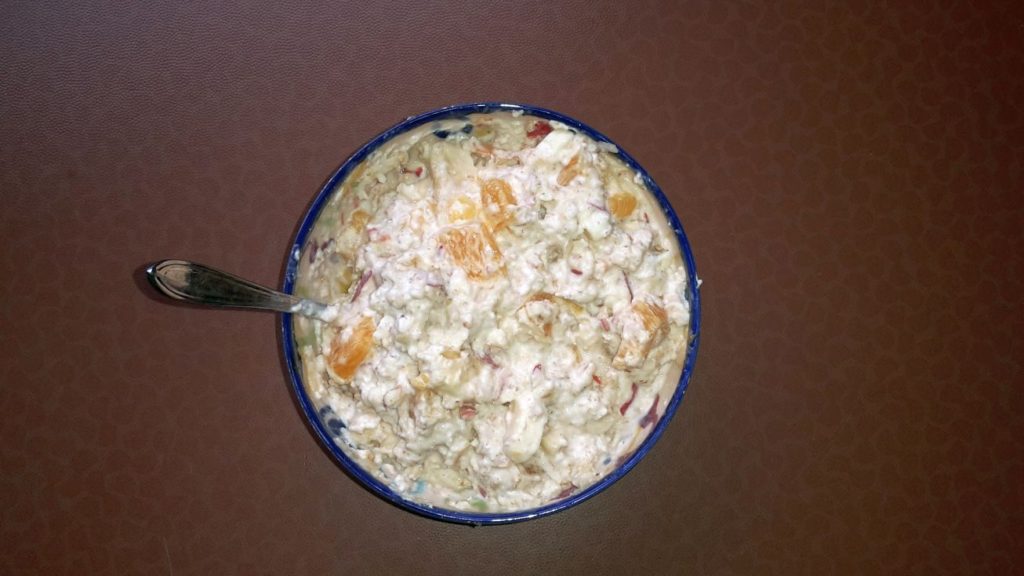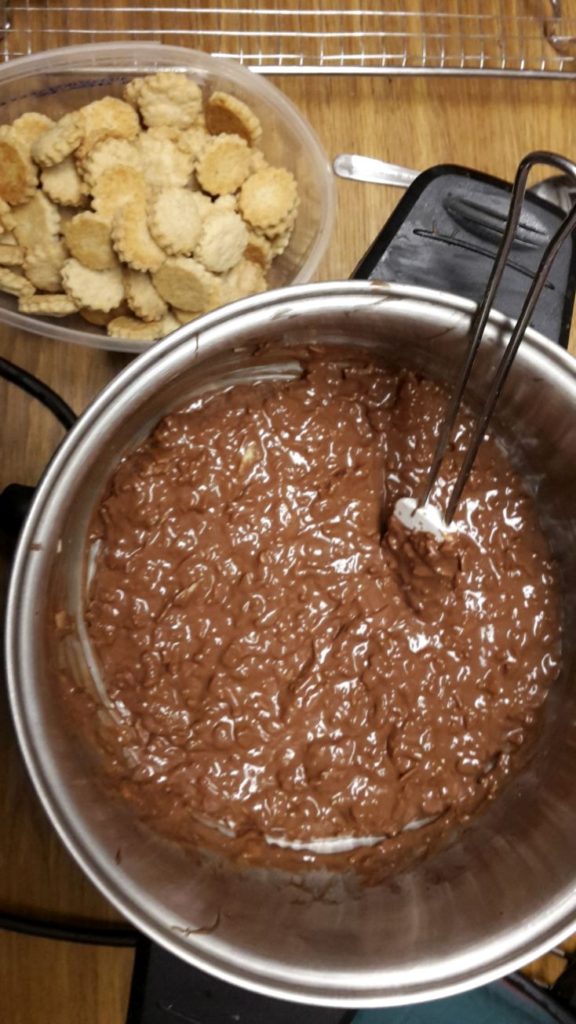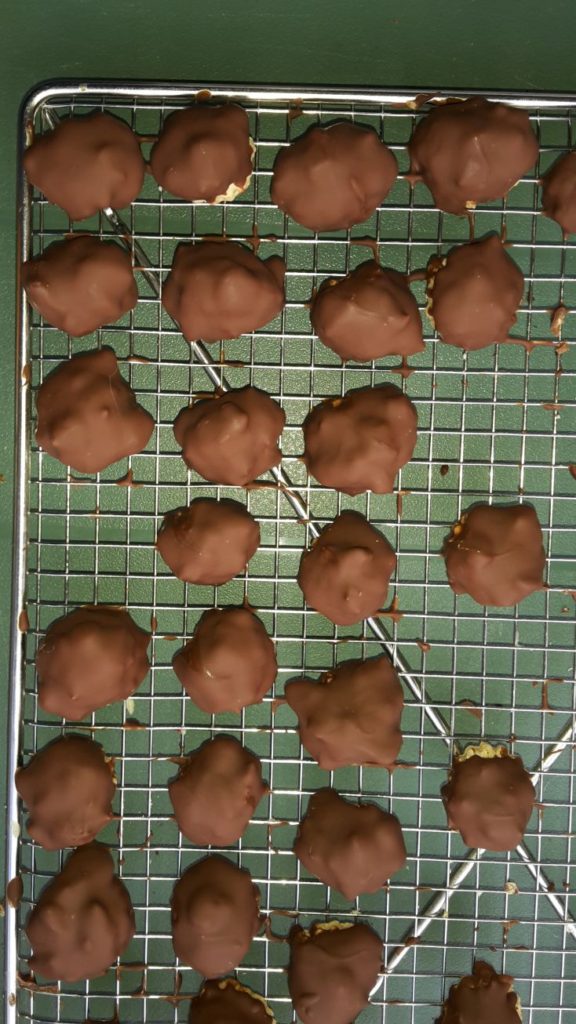Let me talk a bit more about food (as we all know that I like to do that).
The food planning efforts were very well worth it - the things that we brought onto our trip worked very well, and they were just the right amount. We had a walk into the village of Gorisch on our last Forststeig overnight stay, and had something for dinner there; accordingly there was a little bit of food left over in the end. If we hadn't had the dinner out, we'd have ended up eating odds and ends in a slightly curious combination, but it would have been about the amount necessary to bring us to the end of the trail.
For our evening meals, which were the main meal of the day, we had pre-packed things that would cook quickly and easily, with an appropriate amount of calories, and a variety of tastes. That included potato soup with lots of bacon and some salami; rice with a rich peanut-coconut-sauce spiced with ginger (my favourite of the meals); red lentil curry, again with coconut; and pasta bolognese with sunflower seed "minced meat" (which also worked fairly well). The vegan sausages we took along to try out, eaten with mashed potatoes, were not convincing, though.
I'd packaged the individual meal parts in ziplock bags, and each bag collection was held together with a rubber band; then there was "food roulette" in the evening, when The Most Patient Husband of Them All stuck his hand into his pack and pulled out one of the packages. For breakfast, we had a kind of porridge with added dry fruits, and for food during the day, there were nuts, bread, sausage, and home-made bars. Theoretically, you'd call these "Müsliriegel" in German, or "granola bars" in English, but as we were going for more caloric value per weight unit, they were more like... nut bars. I had made some in several different flavours, and the least favourite for both of us was the most müsli-like one, with rolled oats as basis. For the others, I combined figs, walnuts and cardamom; cashews, pistachio nuts and marzipan; and our favourite variation was made from cashews, poppy seed, marzipan, almonds, and dried apricots. The last one did remind me more of a poppy seed cake than a granola bar, which is a very nice thing on such a trip!
And just in case you want to try it yourself, here's the recipe:
100 g shaved almonds
40 g poppy seed, ground
42 g maple syrup
65 g honey (I used honeydew honey, which to me always seems less sweet than other honeys)
35 g marzipan
30 g almond flour (ground almonds should also work)
55 g dried apricots
100 g cashew nuts, finely chopped or ground
Grate marzipan into small bits and mix these into the ground poppy seed. Mix in the other dry ingredients. Mix honey and maple syrup, maybe adding a little hot water, pour over the dry ingredients and mix well. The mass should be firm and sticky. Bake, either shaped into individual bars/pieces or as one flat piece, in a fan oven at c 150-160°C for about 35 mins. It's more drying the mass than baking. If baked in one piece, cut into pieces of the desired size. I had about 12 bars. They tended to stick together a bit in their little bag, but could be pried apart more or less easily. Wrapping them in rice paper would probably work well to keep them more separatistic, or placing a wafer on top and below each bar.
The apricots were not really taste-able in this mix, and could probably have been left out without a change in taste. You should be able to change the amount of the ingredients according to your preferences; as long as things stick firmly enough together, you should be fine - the individual ingredients are all stuff that keeps well, and their combination, accordingly, should do so too.
The food planning efforts were very well worth it - the things that we brought onto our trip worked very well, and they were just the right amount. We had a walk into the village of Gorisch on our last Forststeig overnight stay, and had something for dinner there; accordingly there was a little bit of food left over in the end. If we hadn't had the dinner out, we'd have ended up eating odds and ends in a slightly curious combination, but it would have been about the amount necessary to bring us to the end of the trail.
For our evening meals, which were the main meal of the day, we had pre-packed things that would cook quickly and easily, with an appropriate amount of calories, and a variety of tastes. That included potato soup with lots of bacon and some salami; rice with a rich peanut-coconut-sauce spiced with ginger (my favourite of the meals); red lentil curry, again with coconut; and pasta bolognese with sunflower seed "minced meat" (which also worked fairly well). The vegan sausages we took along to try out, eaten with mashed potatoes, were not convincing, though.
I'd packaged the individual meal parts in ziplock bags, and each bag collection was held together with a rubber band; then there was "food roulette" in the evening, when The Most Patient Husband of Them All stuck his hand into his pack and pulled out one of the packages. For breakfast, we had a kind of porridge with added dry fruits, and for food during the day, there were nuts, bread, sausage, and home-made bars. Theoretically, you'd call these "Müsliriegel" in German, or "granola bars" in English, but as we were going for more caloric value per weight unit, they were more like... nut bars. I had made some in several different flavours, and the least favourite for both of us was the most müsli-like one, with rolled oats as basis. For the others, I combined figs, walnuts and cardamom; cashews, pistachio nuts and marzipan; and our favourite variation was made from cashews, poppy seed, marzipan, almonds, and dried apricots. The last one did remind me more of a poppy seed cake than a granola bar, which is a very nice thing on such a trip!
And just in case you want to try it yourself, here's the recipe:
100 g shaved almonds
40 g poppy seed, ground
42 g maple syrup
65 g honey (I used honeydew honey, which to me always seems less sweet than other honeys)
35 g marzipan
30 g almond flour (ground almonds should also work)
55 g dried apricots
100 g cashew nuts, finely chopped or ground
Grate marzipan into small bits and mix these into the ground poppy seed. Mix in the other dry ingredients. Mix honey and maple syrup, maybe adding a little hot water, pour over the dry ingredients and mix well. The mass should be firm and sticky. Bake, either shaped into individual bars/pieces or as one flat piece, in a fan oven at c 150-160°C for about 35 mins. It's more drying the mass than baking. If baked in one piece, cut into pieces of the desired size. I had about 12 bars. They tended to stick together a bit in their little bag, but could be pried apart more or less easily. Wrapping them in rice paper would probably work well to keep them more separatistic, or placing a wafer on top and below each bar.
The apricots were not really taste-able in this mix, and could probably have been left out without a change in taste. You should be able to change the amount of the ingredients according to your preferences; as long as things stick firmly enough together, you should be fine - the individual ingredients are all stuff that keeps well, and their combination, accordingly, should do so too.




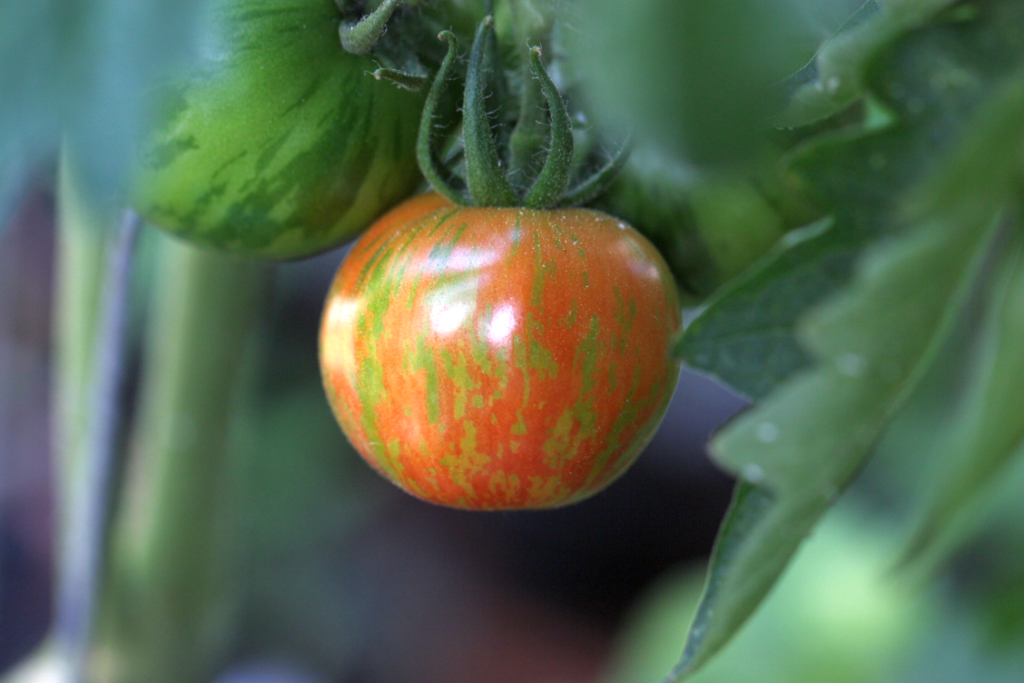 This one's a Tigerella - with fancy tiger stripes. Not completely ripe yet, but definitely working on it!
This one's a Tigerella - with fancy tiger stripes. Not completely ripe yet, but definitely working on it!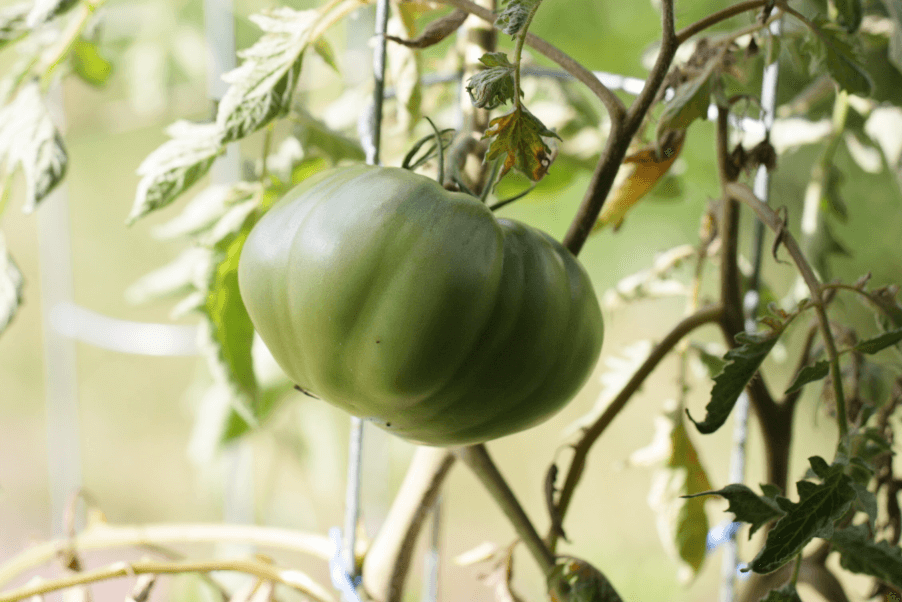 Sibirische Fleischtomate!
Sibirische Fleischtomate!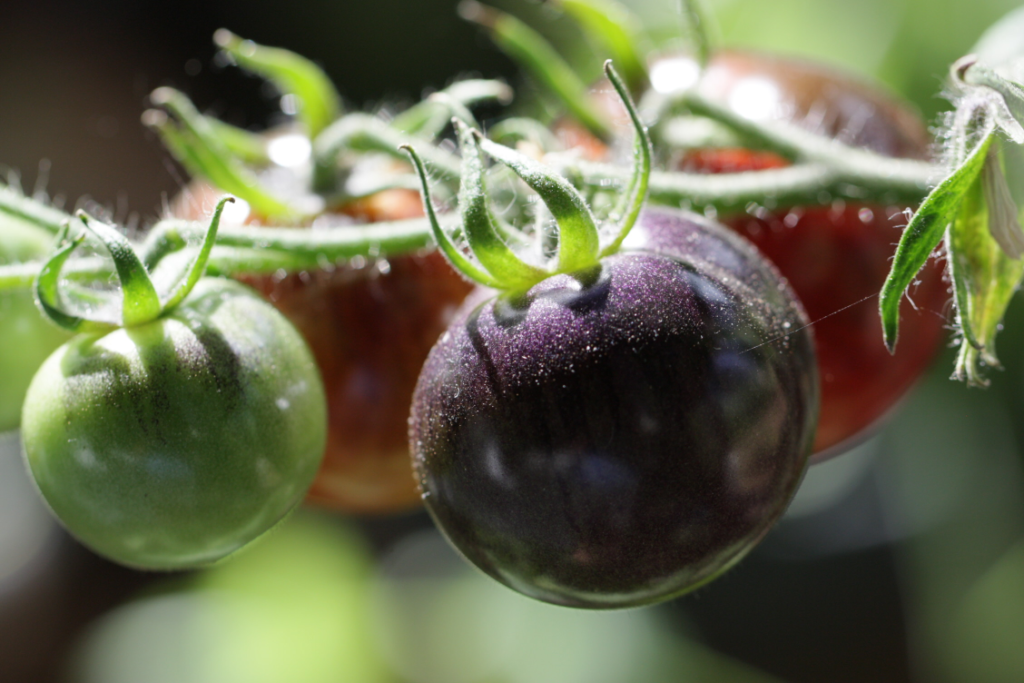
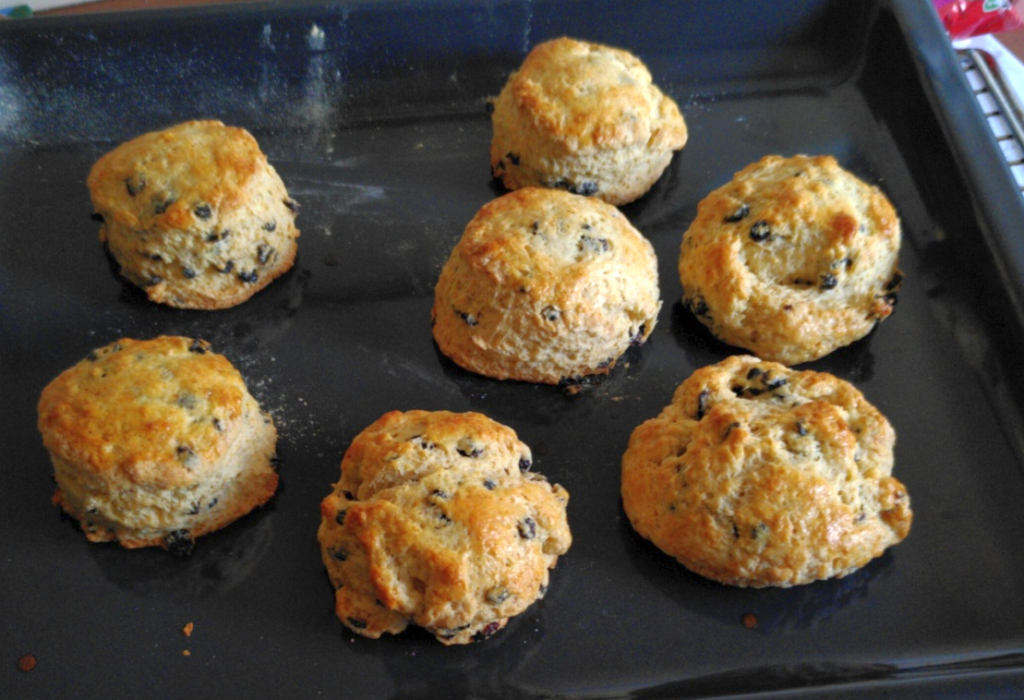
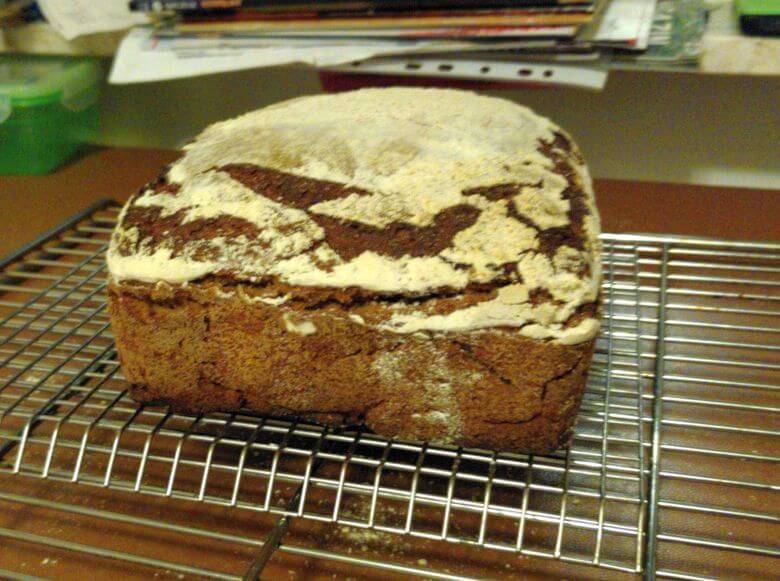
 Bread mix, soaking. As you can see, it's a wild mix of all kinds of different breads... which can be a little surprising sometimes, when there's suddenly some pumpkin seed turning up!
Bread mix, soaking. As you can see, it's a wild mix of all kinds of different breads... which can be a little surprising sometimes, when there's suddenly some pumpkin seed turning up!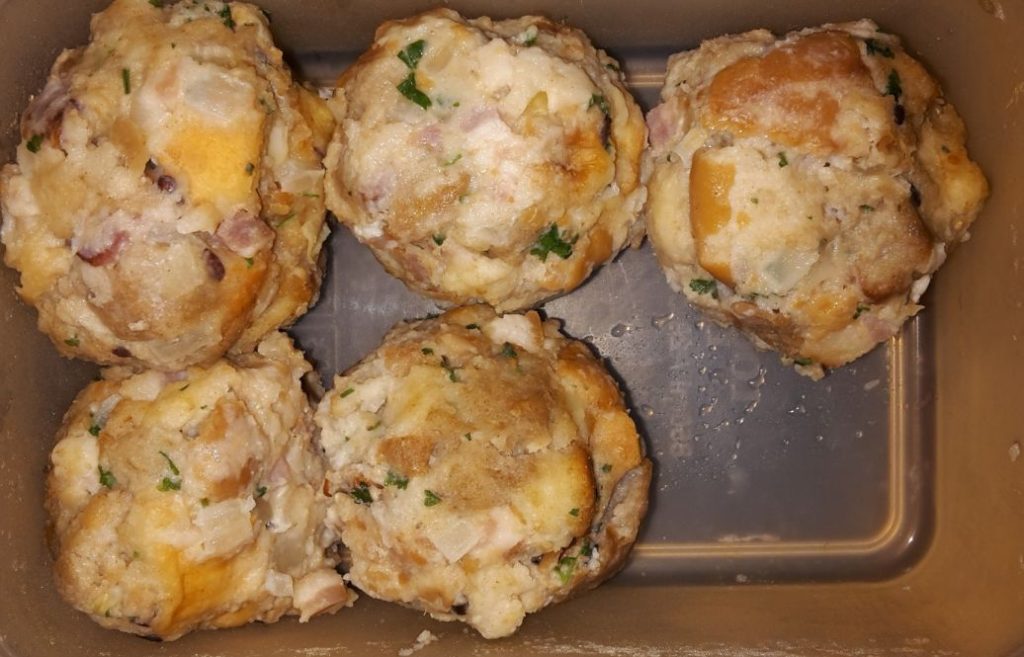 Dumplings!
Dumplings!